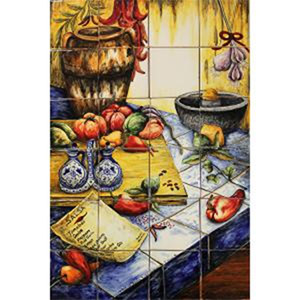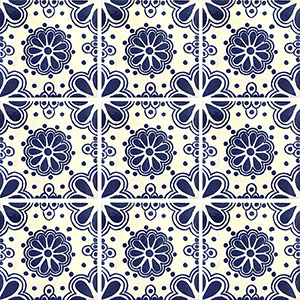There’s nothing shy about Mexican interior design as it is full of color and ornate details. Instantly add an eye-catching colorful backdrop to your kitchen with our decorative Majolica Tile Murals. Each mural is the perfect finishing touch to any kitchen which is in search of a splash of color and Mexican flair.

Both of our new mural designs offer artwork which evokes the vibrant spirit of Mexico. Our Chile Harvest Tile Mural and Fresh Salsa Tile Mural are highly-durable, washable and can go where prints and paintings can’t.
Majolica pottery originated in the 16th century and is primarily distinguished by the milky-white glaze used after the first firing. Each mural is created in Santa Rosa workshop which lies in the mountains of central Mexico, high above the city of Guanajuato at 8,360 feet. Each Santa Rosa Majolica piece is in itself a unique work of art, one that will bring the flavor and flare of this artistry directly into your home.
All majolica tile murals are perfect for kitchen application as they have a semi-gloss finish that is fade, weather and scratch resistant so they can be installed either indoors or out! Where will you install your new mural?

